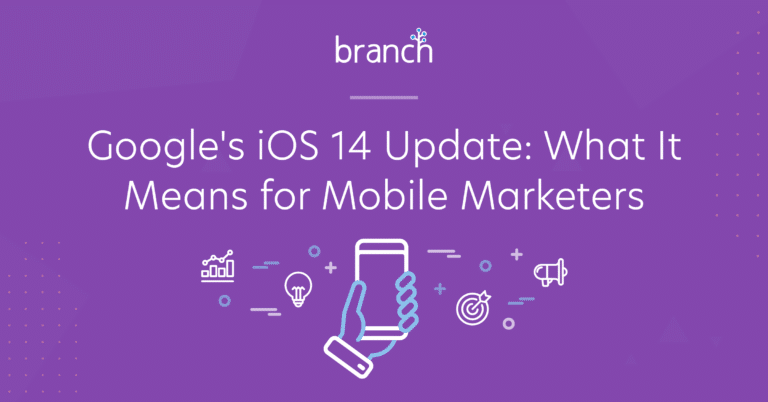This won’t be news to anyone reading, but just to recap: in iOS 14.5 (currently expected in “early spring”), Apple will begin enforcing their new AppTrackingTransparency framework. This means apps will need to ask users for tracking consent, including access to the IDFA. If consent is not granted, then there will be no access to IDFA. When these changes finally go into effect, it will be the conclusion to a long journey that began last summer at WWDC.
While most major ad networks have already issued communications and guidance on their plans, one big unknown has been how Google would react. Yesterday, January 27, 2021 Google provided an update. You can find Google’s blog post here, and more specific guidance for advertisers available here.
We’ve summarized the main takeaways below, as well as some thoughts on what this means for mobile marketers.
Google will use Apple’s SKAdNetwork framework to measure campaigns on iOS.
This is not a surprise, and the SKAdNetwork data will be reported in a new report on the Google Ads dashboard. Google also expects that SKAdNetwork data will be available via the Google Ads API sometime in Q2. This means advertisers will need to make sure the SKAdNetwork framework is implemented in their apps, which most were likely planning to do already.
Google will expand their use of modeled conversion for iOS campaigns.
Currently, Google reports modeled conversion numbers for Search ads on iOS. In the absence of IDFAs, Google will be expanding the use of modeled conversions to other channels. While aggregate campaign data is available via the Google Ads API, we expect that this means Branch (as well as other MMPs) will have less visibility into log level iOS app campaign data from Google.
Google will not show the ATT prompt to collect IDFAs in its own apps.
Google has decided they will not ask their own app users for tracking consent via Apple’s AppTrackingTransparency framework. This is a notable contrast to Facebook’s apps, which initially planned not to show the ATT prompt either, but later reversed that decision. The key takeaway from this is that Google won’t have access to IDFAs, so Google will be relying exclusively on SKAdNetwork and other methodologies for attribution. For advertisers that run campaigns exclusively on Google, there is now no added value to even attempting to collect IDFAs.
Google’s recommendations to customers are summarized below:
- Implement SKAdNetwork. This can be done via the latest version of Google Analytics for Firebase SDK, or any other method (such as the Branch SDK).
- Monitor campaign delivery when ATT enforcement begins. Google expects that iOS App campaigns will experience fluctuations in campaign volume as Apple’s ATT policies go into effect. In particular, ACe (App Campaigns for engagement) campaigns will see a significant decrease in reach. Google says budget and bidding changes might be needed.
- Consolidate iOS App campaigns to 8 or fewer. This is necessary in order to fit within the limitations of SKAdNetwork.
- Use only tCPI or tCPA bidding for iOS App campaigns. If tROAS campaigns are being leveraged with iOS apps, these campaigns should be paused or migrated to tCPA when ATT enforcement begins.
We’ll be working closely with Google over the next few months to ensure this transition goes smoothly, and explore ways to preserve as much reporting visibility as possible for all of our customers. Please reach out to your Branch contact with any questions, or visit https://branch.io/ios-14/ to learn more about preparing for the iOS 14 privacy changes.






















